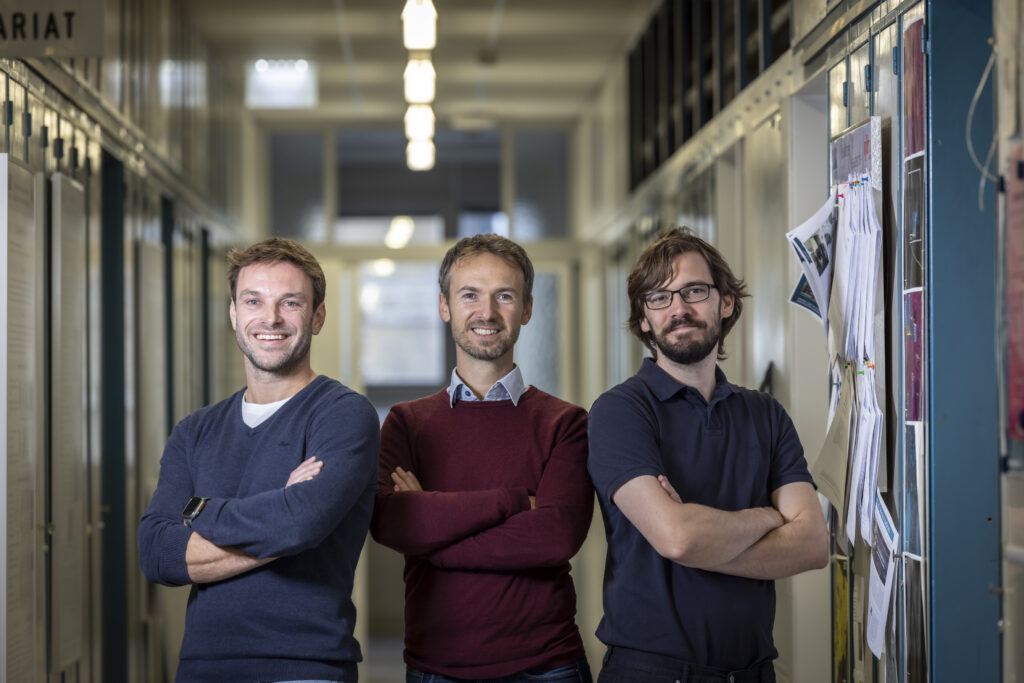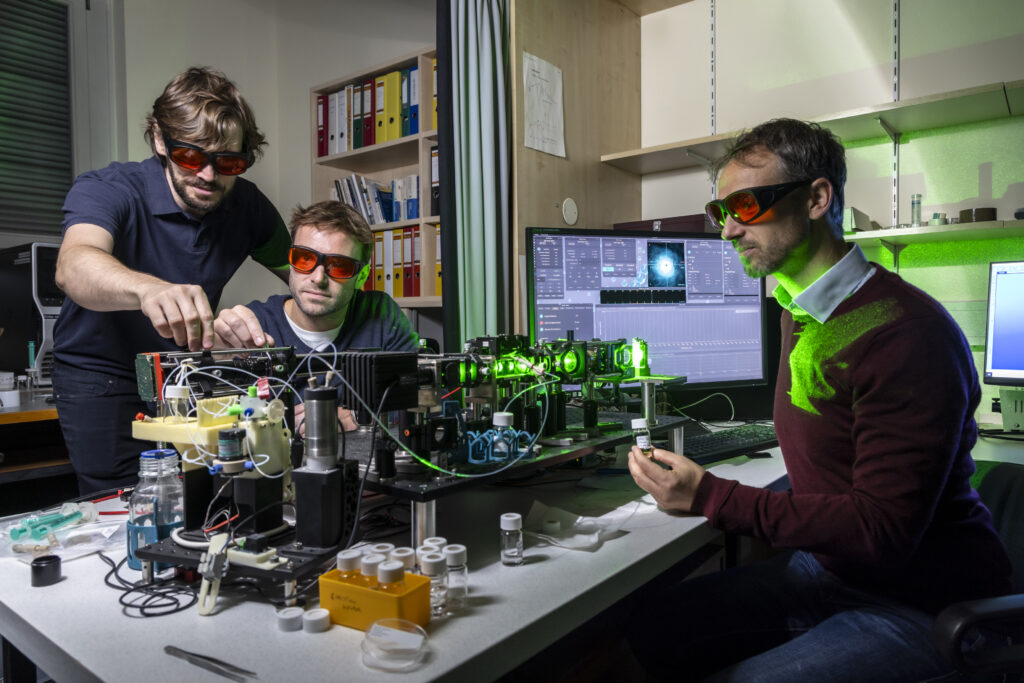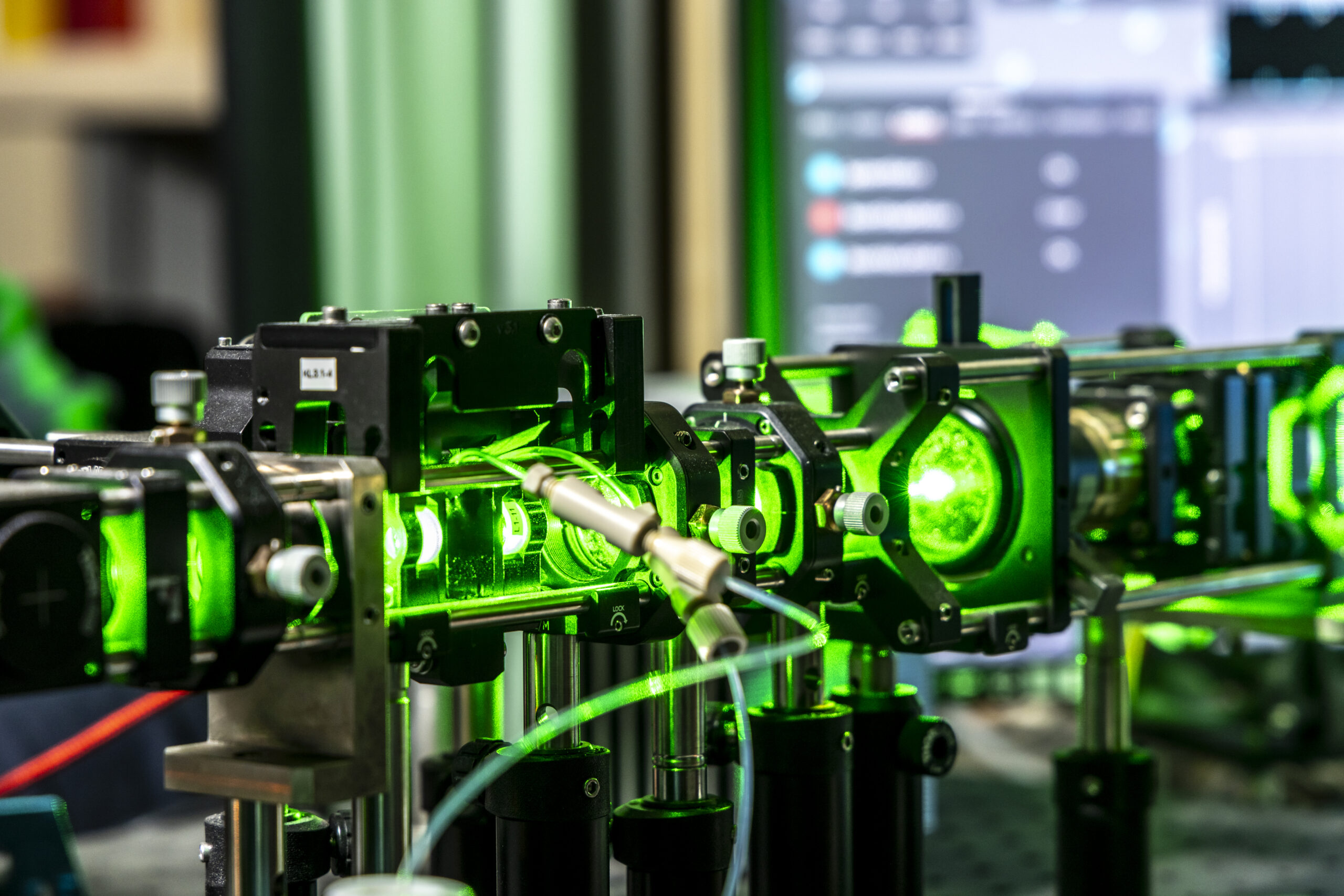The sensor platform uses laser light to detect nanoplastic particles in liquids. Image source: Lunghammer – TU Graz
Unseen Threats: The Rise of Nanoplastics in Our Bodies
From the air we breathe to the food we consume, microscopic plastic particles, known as nanoplastics, have become pervasive in our environment. Unlike their larger counterparts, these tiny invaders can infiltrate our bodies, potentially accumulating in organs and bodily fluids. Until now, detecting and analyzing these particles within the human body posed significant challenges.
A Revolutionary Detection Method Emerges
Researchers at Graz University of Technology, in collaboration with BRAVE Analytics, have developed an innovative method combining optofluidic force induction with Raman spectroscopy. This dual-technique approach allows for the detection, sizing, and chemical analysis of nanoplastics in transparent body fluids such as blood plasma, urine, and tear fluid. ScienceDaily
How the Technique Works
The process begins by channeling a fluid sample through a glass tube, where a weakly focused laser beam interacts with particles in the flow. This interaction, known as optofluidic force induction, causes particles to accelerate or decelerate based on their size, enabling precise measurement of their dimensions and concentration. Phys.org

From left: Christian Neuper (Institute of Electron Microscopy and Nanoanalytics at TU Graz), Christian Hill (BRAVE Analytics), Harald Fitzek (Institute of Electron Microscopy and Nanoanalytics). Image source: Lunghammer – TU Graz
Subsequently, Raman spectroscopy analyzes the scattered laser light from individual particles. This analysis reveals the unique chemical fingerprints of the particles, allowing scientists to determine their exact composition. This method is particularly effective for identifying organic materials and various types of plastics. BIOENGINEER.ORG
Implications for Medical and Environmental Health
One of the immediate applications of this technique is investigating whether intraocular lenses release nanoplastics, a concern previously unexplored. Preliminary studies are underway to assess the potential release of these particles under mechanical stress or laser exposure. ScienceDaily
Beyond medical applications, this method holds promise for monitoring nanoplastic contamination in industrial processes, drinking water, and wastewater, offering a versatile tool for environmental health assessments.
A Step Forward in Understanding Nanoplastic Exposure
As nanoplastics continue to infiltrate our environment and bodies, this groundbreaking detection method provides a crucial tool for scientists and healthcare professionals. By enabling precise identification and analysis of these particles, we move closer to understanding their impact on human health and developing strategies to mitigate their presence.

Harald Fitzek, Christian Neuper and Christian Hill (from left) at the sensor platform, which uses laser light to detect nanoplastic particles in liquids. Image source: Lunghammer – TU Graz
What Lies Ahead?
Could this new technique become a standard tool in medical diagnostics and environmental monitoring? As we uncover more about the hidden world of nanoplastics, what other secrets might we reveal?
Stay informed with the latest scientific discoveries at DailySciTech.com.










